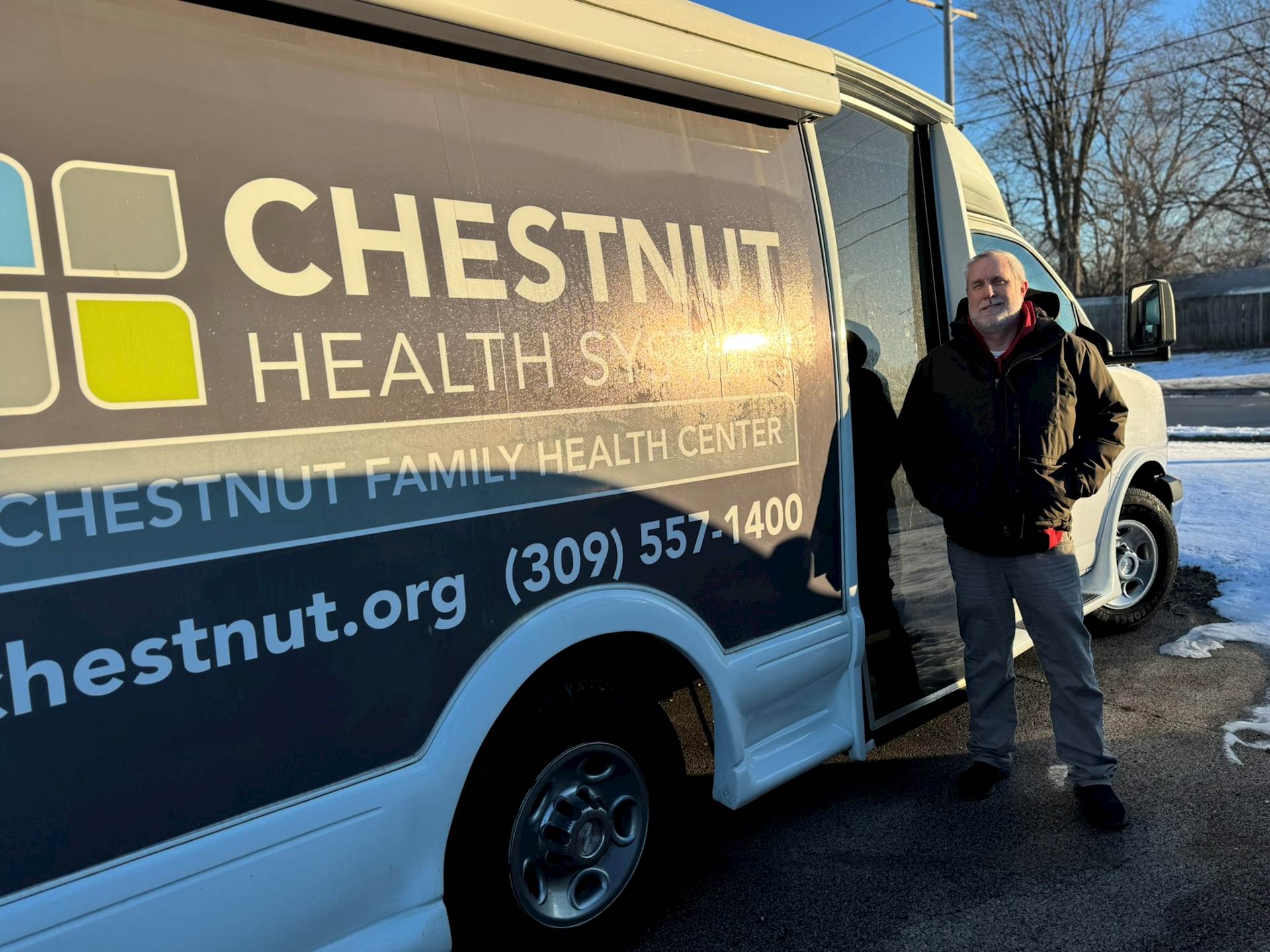 Sean Boston, Community Health Worker
Sean Boston, Community Health Worker
As January temperatures plummet, every table is occupied at a Bloomington community center.
The community center offers protection from the cold where folks can sip coffee, play games, and make connections.
Sean Boston arrives and greets many familiar faces. He is a community health worker representing Chestnut Health Systems. Someone wants to meet with him, he’s told.
Boston is introduced to a new contact, who had come to Bloomington for substance use residential treatment. He experienced re-occurrence and has been unhoused for two years since arriving. Today was as good as any to ask for help.
He has been sleeping at a shelter’s lobby, which was opened due to the frigid temperatures. He expressed the desire to get a job. Before that, he needs to tend to the basics: Restart behavioral health medications and address excruciating mouth pain.
Sean books him an appointment at Chestnut’s new dental office. He says the Chestnut’s “mobile unit”, an exam room on wheels, will be parked outside his shelter the next day. Sean books another appointment at the mobile unit so Chestnut’s newest client can be officially established at his new healthcare home to receive both primary and mental health care.
The two shake hands, marking the start of a partnership.
Community health workers are stationed on the frontlines in a revolutionary approach to health care. By removing barriers to care, community health workers help people navigate social services and take advantage of resources, empowering them to help themselves.
Boston struggled to navigate Medicaid before finding Chestnut as a patient. He quickly fell in love with the atmosphere and applied for a job.
“I was trying to figure this all out on my own,” Boston said. “You can find that one person who can show you how to do things. That is what I want to be for other people.”
At a meeting with community partners, Boston mentioned a client who recently completed Chestnut residential substance use treatment but had nowhere to go. The team sprang into action, identifying an available studio apartment and potential funding source for deposit and first month’s rent. Calls are made and paperwork is printed.
“We are all a piece of this puzzle to help them move forward,” he said. Under this model, every individual has a team behind them.
Building trust is a big part of a community health worker’s job description. Many potential clients are reluctant to reach out. Trust is often achieved by listening to the client’s story and sharing their own.
Building trust can also be a simple gesture. Sean simply said hi to someone for several weeks before the client confided that his ear was in pain. A nurse on the mobile unit looked at his ear and said the issue was serious enough for the emergency room.
Sean can gain trust out of his genuine interest in others’ well-being.
“I think people are pretty amazing. That’s why I love this job,” he said.